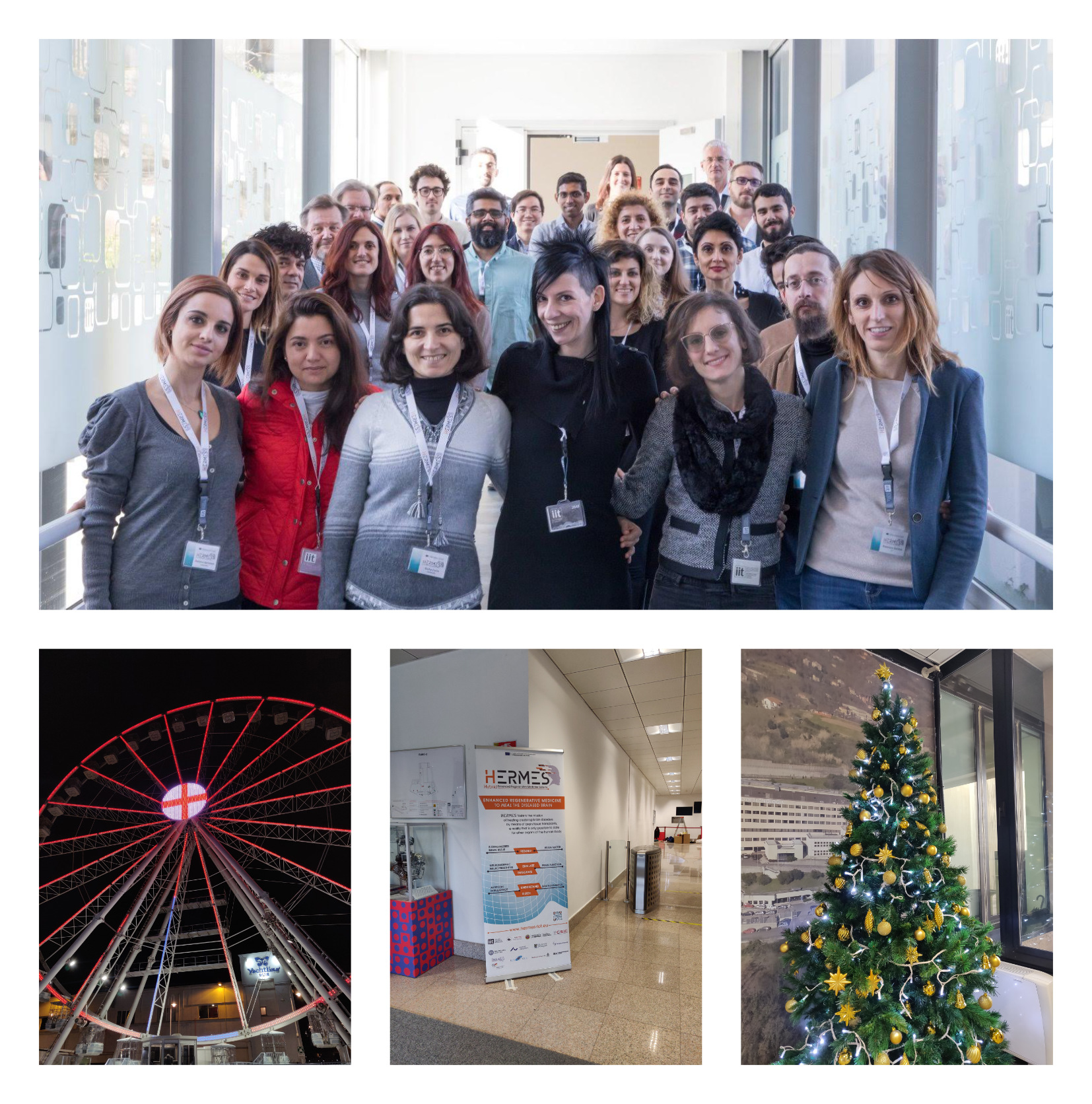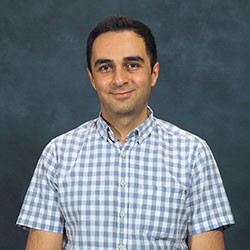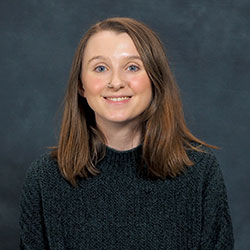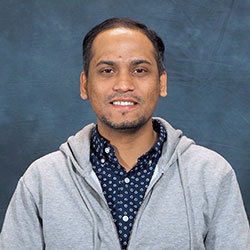
On December 2nd-6th, three members of the meLAB who are currently working as part of the Horizon 2020 project Hybrid Enhanced Regenerative Medicine Systems (HERMES) attended the first annual consortium meeting at Istituto Italiano di Tecnologia (IIT), Genoa, Italy. Over the course of five days, each team presented their work from the first twelve months, and laid out their plans for future efforts. Vahid and Rupam, two of our post-doctoral researchers, attended all five days, including the Advisory Board meeting and Eve, a PhD student, attended four days of group presentations.
The launch of the group meeting saw colleagues from Eurokleis and IIT explain to the other academics the importance of our social media presence in drumming up excitement surrounding our research. Along this line, philosopher Carlo Ierna from Radboud Universiteit (RU) explained the importance of citizen engagement and sensibilization about the project topics and the benefits of biomedical brain implants to cure brain disorders. Encouragingly, throughout the week, the HERMES twitter account gained several new followers, and we had excellent engagement with our daily picture posts. We also had the opportunity to visit some of the IIT labs and observe live experiments. That evening, we enjoyed an excellent social consortium dinner at Le Piastre di Emma, Genoa.
On day two, we heard from group members working on the biological pillar of the project: Università di Verona (UNIVR), IIT and Università di Modena e Reggio Emilia (UNIMORE). These engaging presentations helped the engineers among the group better understand how each of the building blocks of this project would fit together, as well as motivating our team to create a flexible neural probe that could make the best of the excellent biological research already carried out by the other teams.
In the following two days, the focus shifted to the neuromorphic hardware and artificial intelligence (AI) software that are integral to neural signal recording and brain stimulation. Three teams from CSIC, IstitutoPolitecnicodi Milano (POLIMI), and Aarhus University (AU) have been hard at work in collaboration, building an intelligent hardwaresystem which will interface with the target brain tissue, while the teams from Tampere University (TAU) and IECSCYL have been working on signal processing, machine learningand AI algorithms that will coordinate the interplay between neuromorphic electronics and brain tissue. The hardware will be integrated on the base of Glasgow’s flexible probe, and as such, it was fascinating to hear about not only the design process but the miniaturization and fabrication efforts that are so integral to the chronic implantation of the device.
Finally, IIT was honored to host a panel of experts as part of their advisory board meeting. Among them were a neurosurgeon, electronic engineers, neurobiologists and neuroscientists, and as a special guest, a patient representative, who spoke to the real-life impact of this research. During our stay, the Glasgow team each took away something different from their time at IIT.

Vahid Nabaei "The UNIMORE team's updates and information regarding neural probe geometry and shape as well as different probe insertion strategies were very useful for our team to design, model and fabricate the neural probes according to the project's requirements and needs."

Eve McGlynn "I especially enjoyed hearing from the biologists within our team. Literature is a good place to start when learning about immune system interactions with implants, and how the brain is a special case. However, the presentations from people who work with the in vitro and in vivo biological models every day helped me to understand much better how we can characterise a positive result, and recognise areas in which we can improve."
 Rupam Das "HERMES meeting gave me the opportunity to interact with researchers from different backgrounds. I had a lot of discussions and brainstorming sessions with neurobiologists, IC designers, and Artificial Intelligence groups to have an idea of the implantable neural device that is required to be designed for this project. On top of that, I learned it is critical to send as many samples as possible for cytotoxicity tests to make sure I am using the right material for neural device fabrication."
Rupam Das "HERMES meeting gave me the opportunity to interact with researchers from different backgrounds. I had a lot of discussions and brainstorming sessions with neurobiologists, IC designers, and Artificial Intelligence groups to have an idea of the implantable neural device that is required to be designed for this project. On top of that, I learned it is critical to send as many samples as possible for cytotoxicity tests to make sure I am using the right material for neural device fabrication."
Hybrid Enhanced Regenerative Medicine Systems (HERMES) - Funded by European Union's Horizon 2020FETPROACT-2018-2020 GA n.824164 Official Website: https://www.hermes-fet.eu/Twitter account @HERMES_FET








